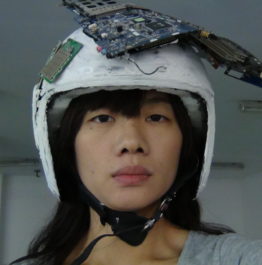For those of us living in Paris, the terrorist attacks on the eve of 13 November 2015 shook us to our very core. For some, it was our first confrontation with a violence aimed at everyone and at no one.
In the days that followed, as shock evolved into pain, a collective healing process began. Some of us had lost friends and relatives; others had themselves hid in fear that night. This healing included conversations with everyone from close friends to random strangers as well as inner solitude.
In the weeks and months that followed, similar attacks took place elsewhere around the world, shattering our prior notions of safety. We found ourselves angry and confused. Some in our communities turned to anger and hate, suspicion and distrust. Politicians began to increasingly talk about changes to security and migration policies.
This year, a group of students from Sciences Po decided to open an alternative medium of communication. One which lay at the core of humanity: art.
JE SUIS: When Art Talks Terrorism is a platform for artists to express their interpretation of society’s feelings of insecurity and disenchantment resulting from violence. In the process, we hope to encourage our audience to re-open lines of communication and tap into shared feelings and empathy, ones that surpass social boundaries such as race, religion, sex, or national origin.
The event was conceptualised by Silvia Ainio and co-organised by Carolina Brandao, Ewa Kumelowski, Martina Hartmann, Marit Hjort, Monika Lubinski and myself in collaboration with the Bureau Des Arts (BDA) at Sciences Po. In February, we launched a competition to encourage participation from artists around the world whose diverse backgrounds brought us paintings, photographs, sculptures, and videos.
To round off the event, we invited a jury to evaluate some 20 submissions. It included renowned gallery owner Barbara Polla, art historian Paul Ardenne, politician Jean Paul Cluzel and former French security and intelligence official Jean Pierre Pochon. Their observations follow below:
“A group of political science students who decide to explore terrorism through the eyes of artists is very good news. All art is political, and politics should be an art. The way to approach their exploration, through a call for tenders, proposals and exhibitions, and the awarding of a prize, shows a great generosity and a real willingness to face the many difficulties: how to engage artists? How do we make the selection - or do we prefer the lack of selection? How to exhibit the works? How can we interest specialists in the art world who could contribute to the spread of this adventure? And above all, how can we continue?”
Barbara Polla: owner, Galerie ANALIX FOREVER and contributor to Les Quotidiennes Agefi, Citizen K, Nuke, Blast, and Bariqaldana
“The artworks display a great technical mastery and an evident ability to convey the artist's feelings, through the combination of images, words and sounds / silence.”
Jean Paul Cluzel, Inspecteur Géneral des Finance Honoraire
“The commitment of students to the denunciation of terror through works of art is an exhilarating but a difficult challenge.”
Jean Pierre Pochon, former Director General of General Intelligence.
“Any initiative, from wherever it comes, that emphasizes the great pains of an age is welcome. JE SUIS: When Art Talks Terrorism is one of these.”
Paul Ardenne, novelist and contemporary art critic.
JE SUIS: When Art Talks Terrorism closed on 30 March with a cocktail reception and remarks from Frederic Mion, Director of Sciences Po.
“The exhibition is an attempt to open lines of communication in the society when dealing with the aftereffects of violent terror attacks, through the medium of art,” he announced. “Faced with the ugliness of death, arts exalts the beauty of life. Faced with totalitarianism, artists build spaces of freedom, which are a means to fight tyranny, even silently.”
Silvia Ainio announced the winner of JE SUIS: When Art Talks Terrorism, a film called “Three Black Dreams,” produced by Taiwanese artist Yu Chen-ni. Though inspired by real-life events, her film confronts violence in the realm of dreams in order to stress the absurdity of the real while simultaneously amplifying feelings of surrealism. The combination thus provides the audience with a phantasmagorical yet honest depiction of life in Taiwan.
In the first dream, Chen-ni confronts the ways in which the Taiwanese education system denies children of their individuality. The second responds to a tragedy in Taipei from 2015 when a man suddenly murdered seven people on the subway for no reason. The final dream explores the oppression of city life through a woman who sleepwalks - but ends on a note of hope.
During the closing event, artists, jurors, organizers, and audience mingled to discuss the works while reflecting on their own experiences with violence. Together, we processed some of our trauma and were able to create a diverse space that was held together by creative expression.

